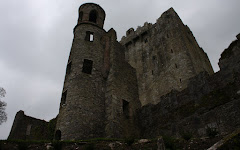Tuesday, August 4, 2009
A Testimonial: Altitude Counts and Oxygen Matters
And symptoms of altitude sickness infiltrated the well-being of every single one of us on "Tour Intrepid"; the degree of severity ranged from headache and malaise all the way to such a serious shortage of oxygen content in the blood as to require the administration of supplemental oxygen at a clinic. Even our tour guide Claire, who resides in Cusco (elevation in the 11,000 ft. range), experienced the increased need to pee as we wended our way from Arequipa (8,000 ft.-ish) to Puno (12,500 ft.-ish), located on the shore of Lake Titticaca. For, you see, one loses a higher rate of water vapor from the lungs at higher altitudes, so one needs to drink more to stay hydrated, and thus, one tends to pee more as well. Headache, a common complaint of many adjusting to higher altitudes, is a symptom of both dehydration and altitude sickness, and a goodly number of those suffering headaches at altitude could be dealing with either or both issues.
Well, while in Arequipa I had a slight headache most of the time, one I explained away as a sinus situation because of the dryness of the air. Now, with hindsight and a better knowledge of altitude sickness, I suspect that my current low-lander status--afterall, I have dwelt near the coast of Tokyo Bay for four years--subjected me to initiatory symptoms of altitude sickness the two days we stayed there. Altitude sickness generally becomes operative for a statistical group of the population around 8000 feet, the elevation of Arequipa.
The morning we left Arequipa to drive to Puno, we stopped at a shop selling coca leaves and goods made from coca leaves--NOT as in "cocaine," mind you--and Claire insisted that we all purchase something made with coca leaf to consume on our days's journey, an ascent of over 4000 feet; natural coca has properties that seem to alleviate altitude sickness. (STAY TUNED: I will discuss coca and our experiences with it in my next blog post.)
By dinner time that evening in Puno, our group had lost four in number--too miserable to leave their beds, they were--and a few more felt "iffy," but Claire encouraged them to try to eat something and to continue drinking at least water. Then she confided that Puno was always the point on the tour where she temporarily "lost" tour members. By 11:00 that night misery caught up with me. For the next 5-6 hours I couldn't sleep, I peed at 90 minute intervals (and continued with that pee schedule for about the next 36 hours), at moments I felt like I couldn't catch my breath, and then I added bathroom forays to deal with the kind of stomach distress that generates the internal quandary of just what one ought to do with the commode: sit on it or lean over it with mouth wide open.
Although there were moments during the night when I fully believed I would have to forfeit the next day's activities on Lake Titticaca and moan away the day in the hotel room, by morning--even if still hovering in the below average range of wellness--I decided to give it go: My destiny might never include Lake Titticaca again! At breakfast we learned that Claire had escorted two of our group to the clinic due to more severe altitude-induced symptoms; one actually spent the rest of the night in the clinic hooked up to supplemental oxygen. Ultimately, only those two remained at the hotel and did not participate in the Lake Titticaca activities. Not that the rest of us were in real great shape by any means either, as evidenced by the fact that on the three-hour boat ride out from Puno and then back to Puno, every single one of us spent an inordinate amount of both blocks of time stretched out on the benches or on the decks sleeping! Still after our lunch on Taquille Island that day, I felt crazily SO much better; even the slight but constant headache of the last three and a half days had disappeared.
Below are listed some of most common symptoms of altitude sickness--the so-called "mild" form, not the kind that puts you in the hospital and can kill you:
Headache
Lack of appetite, nasea, or vomiting
Fatigue or weakness
Dizziness or light-headedness
Insomnia
"Pins and needles"
Shortness of breath
Rapid pulse
Drowsiness
General malaise
Peripheral edema (swelling of hands, feet, or face) Several in the group mentioned they couldn't get their rings off.
"Blonde" moments
And to conclude, here is a "blonde" moment story: That first night in Puno, after dinner but before the true misery of altitude sickness caught me, Carolee decided to take her shower before bed because Lake Titticaca activities included an early morning wake-up call. After her shower Carolee informed me that none of the water had drained. I investigated the situation, and sure enough, the water in the tub did not seem to be draining at all. Since I would want a shower in the morning, Carolee called reception, and they immediately sent up a handyman. He was only in the bathroom for a moment before re-emerging with a big grin on his face. In his hand he held up the plug for the tub. Carolee had not considered whether or not the tub had a plug, and that night the thought never crossed my mind either.
Subscribe to:
Post Comments (Atom)






























No comments:
Post a Comment